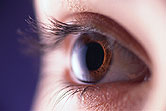
SUNDAY, July 11 (HealthDay News) — The changing makeup of the U.S. population is expected to lead to an increase in cases of glaucoma, the leading cause of vision loss in the country, experts say.
A number of demographic and health trends have increased the number of Americans who fall into the major risk groups for glaucoma. These trends include:
- The aging of America
- Growth in the black and Hispanic populations
- The ongoing obesity epidemic
And as more people become at risk, regular eye exams become increasingly important, eye experts say. Early detection of glaucoma is essential to preserving a person’s sight, but eye exams are the only way to catch the disease before serious damage is done to vision.
“The big thing about glaucoma is that it doesn’t have any signs or symptoms,” said Dr. Mildred Olivier of the Midwest Glaucoma Center in Hoffman Estates, Ill., and a board member of Prevent Blindness America.
“By the time someone says, ‘Gosh, I have a problem,’ they are in the end stages of glaucoma,” Olivier said. “It’s already taken most of their sight away. That’s why we call glaucoma ‘the sneak thief of sight.'”
Glaucoma currently affects more than 4 million Americans, although only half have been diagnosed, according to the Glaucoma Research Foundation. It’s cited as the cause of 9 to 12 percent of all cases of blindness in the United States, with about 120,000 people blinded by the disease.
Glaucoma is most often caused by an increase in the normal fluid pressure inside the eye, according to the U.S. National Eye Institute. The added pressure damages the optic nerve, the bundle of more than a million nerve fibers that send signals from the eye to the brain. In most cases, people first notice that they have glaucoma when they begin to lose their peripheral vision. By then, it’s too late to save much of their eyesight.
“Glaucoma is the number one cause of irreversible but avoidable blindness,” said Dr. Louis B. Cantor, chairman and professor of ophthalmology at the Indiana University School of Medicine and director of the glaucoma service at the Eugene and Marilyn Glick Eye Institute in Indianapolis.
“By the time it’s noticeable, 70 to 90 percent of vision has been lost,” he said. “Once it’s gone, it’s gone. There’s no retrieving vision lost to glaucoma.”
The most common risk factor for glaucoma is simply surviving.
“Glaucoma is a disease of aging,” Cantor said. “The risk of developing glaucoma goes up considerably with aging.”
As the population of the United States ages, the number of glaucoma cases will naturally increase. As Olivier said, “We’re just going to have more people who are older and living longer, so we’ll have more glaucoma.”
However, people who are black or Hispanic also have increased risk for developing glaucoma. Demographically, both groups are growing in the United States, particularly Hispanics. As their numbers increase, so, too, will the incidence of glaucoma.
Glaucoma already is the leading cause of blindness among black Americans and is five times more common in blacks than whites, according to U.S. government data.
“Not only do African-Americans get more glaucoma, they get it younger and it’s more resistant to treatment,” Cantor said.
More recent research has found that Hispanics develop glaucoma at about the same rate as blacks, according to the Glaucoma Research Foundation. Glaucoma rates go up dramatically for older Hispanics. “Once they get to about age 60, the incidence of glaucoma starts to go up,” Olivier said. “We don’t know why.”
To a lesser extent, medical experts also believe that the obesity epidemic will contribute to a rise in glaucoma cases. People with diabetes are twice as likely to develop glaucoma as people without diabetes, although the reasons for that are not clear, according to the foundation.
What is clear, though, is that anyone in a risk group should have regular eye examinations. The National Eye Institute recommends dilated eye exams at least every two years for people at increased risk for glaucoma.
“It’s very important to get regular eye exams,” Cantor said. “Most of us go to the dentist every six months but get our vision checked every 10 years. Which would you rather lose, your sight or your teeth?”
But vision loss need not be a given. Medicines and surgeries available today can slow down the progression of glaucoma.
“Vision loss is preventable,” Cantor said. “Many people with glaucoma can enjoy vision for the rest of their lives if the disease is detected early and treated promptly.”
But the key, of course, is finding it early.
“A lot of people don’t know that the treatments we have for glaucoma are very good,” Olivier said. “Just because you have glaucoma, that doesn’t mean it’s going to blind you. But we have to catch it early.”
More information
Prevent Blindness America has more about glaucoma.
For more on confronting glaucoma, read about one man’s 17-year effort.

